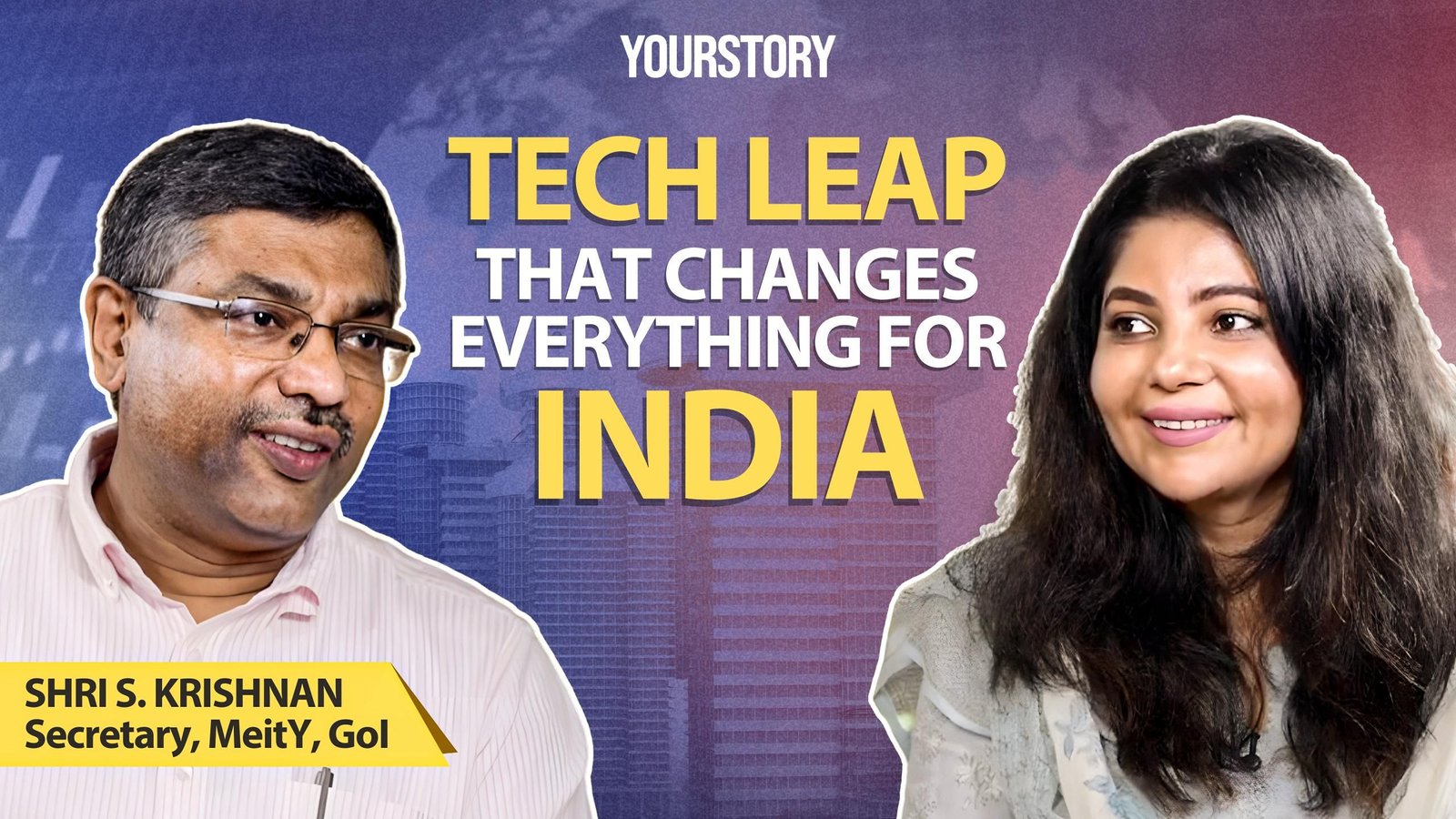Inside the government playbook that's fast-tracking India's chip dreams


S Krishnan, Secretary of the Ministry of Electronics and Information Technology (MeitY), says India Semiconductor Mission—approved by the Union Cabinet in 2021—has moved decisively from policy blueprint to manufacturing reality, with CG Power’s pilot plant recently inaugurated in Sanand, Gujarat, and Micron Technology’s large-scale facility nearing completion.
“I can say I’m more than 100% confident,” Krishnan tells YourStory Founder and CEO Shradha Sharma in a recent interview. “The first chips designed and manufactured in India have already rolled out. The primary goals of the semiconductor mission are being achieved.”
Late entry, strategic focus
India entered the global chip race decades behind established players like Taiwan, South Korea, and the US. The country’s early push into semiconductor efforts with a lab at Mohali never achieved commercial scale, leaving India dependent on imports for critical technology infrastructure.
Now, New Delhi is attempting to compress the learning curve through what Krishnan describes as “the most generous industrial policy programme India has ever undertaken.” The central government covers 50% of fabrication plant construction costs, with state governments contributing another 20-25%, effectively subsidising three-quarters of total investment. Unlike traditional subsidy programmes that disburse funds after project completion, India releases payments alongside construction progress.
The strategy deliberately avoids the cutting-edge nodes that dominate headlines. Instead, India has focused on mature semiconductor technology (28-110 nm chips) to power automobiles, home appliances, and consumer electronics.
“For a country just beginning in this area, it is better to go with well-established technology and succeed than to take a risky bet on very advanced nodes,” Krishnan explains. “These chips may not be 2-nanometer, but they’re the backbone of everything from cars to washing machines.”
The approach reflects economic pragmatism. While Japan invests $38 billion in two advanced fabs and the US allocated $58 billion in semiconductor subsidies, India’s $10 billion commitment targets a substantial but achievable market segment where established technology reduces both risk and capital requirements.
Ecosystem building and IP development
India’s model borrows from Taiwan’s successful Hsinchu Science Park, though Krishnan acknowledges that the ecosystem requires six decades to mature. The government is fostering similar clusters in Gujarat while leveraging existing design talent concentrated in Bengaluru, Hyderabad, Pune, Chennai, and Noida.
Through initiatives like the Design Linked Incentive Scheme and Chips-to-Startup Programme, MeitY has provided 270 institutions and 23 startups access to expensive electronic design automation software typically beyond the reach of emerging companies.
The emphasis on intellectual property ownership sets India’s approach apart. Currently, 20% of global semiconductor design talent works in India, but most serve multinational corporations with IP developed domestically but owned abroad.
“Our goal is not just to do design work for global multinationals,” Krishnan says. “We want more of that IP to stay here.”
The AI parallel track
Beyond semiconductor development, IndiaAI Mission employs what Krishnan terms a “uniquely Indian model” to speed up the country’s artificial intelligence innovation. Private sector application development is catalysed by government infrastructure investment.
The state has contracted 38,000 graphics processing units worth of compute capacity, nearly quadrupling original targets, while supporting development of domestic AI models, including Sarvam, Gyani, GAN, and Socket. A national data platform now hosts over 1,000 datasets for researchers and entrepreneurs.
“AI models have to capture India’s cultural and linguistic diversity, which global models may not reflect,” Krishnan explains. “That’s why we’re investing on our own.”
Political capital and bureaucratic execution
Krishnan credited both bureaucratic capability and sustained political backing for rapid policy implementation, drawing on experience from Tamil Nadu, where successive governments maintained industrial policy continuity regardless of party control.
“Civil servants can only do so much,” he adds. “What really matters is political support and the space to operate. At MeitY, we’ve been given that space and leadership.”
The comments outline broader questions about India’s implementation capacity across complex industrial policies requiring multi-year execution and coordination between federal and state governments.
Looking ahead, Krishnan identifies three priorities for sustaining momentum: achieving technological self-reliance in critical sectors, establishing India as a key node in diversified global supply chains, and maintaining economic growth despite external shocks.
Ease of doing business remains an acknowledged constraint. “There is more which needs to be done,” Krishnan admits. “We must ensure that legitimate issues faced by industry are addressed quickly, and that policy implementation works for all participants.”
Energy infrastructure—including green hydrogen, renewable sources, and storage technologies—represents another critical enabler for technology manufacturing that requires sustained government attention and private investment.
The SUV strategy
India’s approach reflects a calculated bet that reliable, affordable, mass-market semiconductors may prove more strategically valuable than pursuing cutting-edge nodes requiring exponentially higher capital investment and technical risk.
With the government underwriting fabrication plants, backing design startups, and catalysing AI development, India is positioning itself not merely as a participant in the global technology order but as an alternative hub for companies seeking supply chain diversification so as not to rely on any single country.
The next 18 months will test whether India’s late but well-funded entry into semiconductor manufacturing can achieve the scale and reliability needed to attract global customers and validate the country’s pragmatic approach to a strategically critical industry.
Edited by Kanishk Singh
Discover more from News Hub
Subscribe to get the latest posts sent to your email.







